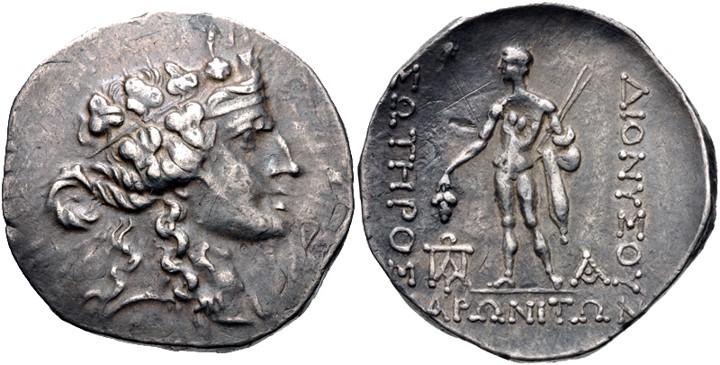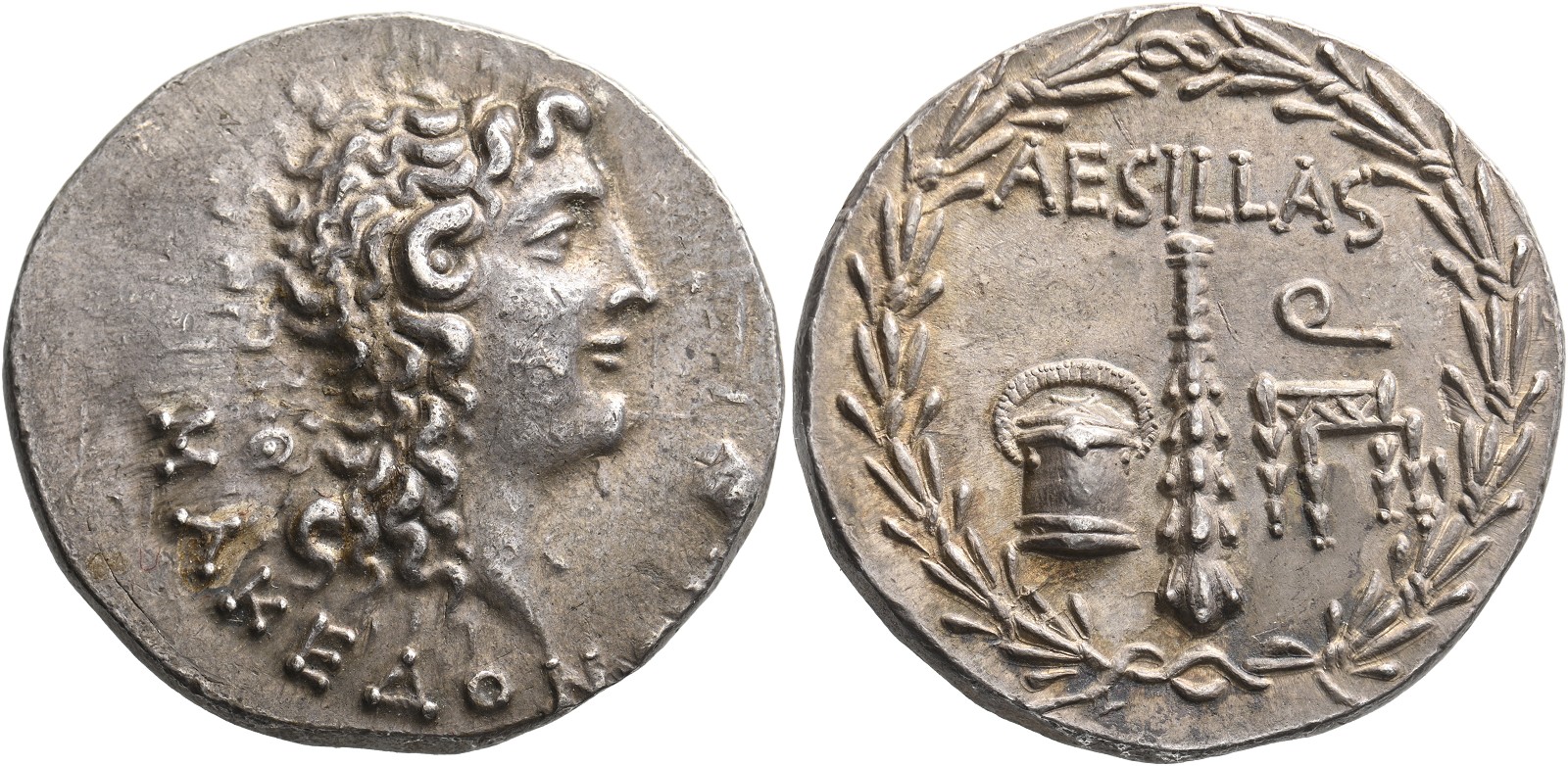85 BCE - 70 BCE | ΔIONYΣOY ΣΩTHPΩΣ MAPΩNITΩN
Overstriking coin
Maroneia on uncertain - Classical Numismatic Group, E-Auction 417, 28 March 2018, 29.jpg
[1]
Overstruck variety
Aesillas.jpg
|
|
Sale(s)Sale(s) ᵖ:
|
Classical Numismatic Group, E-Auction 417, 28 March 2018, 29
|
|
|
|
Description
| ObverseInscription or printing placed on the obverse.:
|
Wreathed head of young Dionysos right
|
ReverseInscription or printing placed on the reverse.:
|
ΔIONYΣOY ΣΩTHPΩΣ MAPΩNITΩN (Greek) Dionysos standing half-left, holding grapes and narthex stalks, monograms to inner left and right
|
Mint and issuing power
| MintIdentifies the place of manufacture or issue of a numismatic object.:
|
Maroneia
|
Ancient regionAncient region.
|
Thrace
|
Modern countryModern country: Greece
|
AuthorityIdentifies the issuing power. The authority can be "pretended" when the name or the portrait of X is on the coin but he/she was not the issuing power. It can also be "uncertain" when there is no mention of X on the coin but he/she was the issuing power according to the historical sources:
|
Roman Republic
|
Chronology
| FromIdentifies the initial date in a range assigned in a numismatic context. 85 BCE toIdentifies the final date in a range assigned in a numismatic context.. 70 BCE
|
Hellenistic 323-30 BC  periodTime period of the numismatic object. periodTime period of the numismatic object.
|
Physical description
MetalThe physical material (usually metal) from which an object is made.: Silver 
|
WeightWeight of the numismatic object (in grams). in grams: 16.74g16,740 mg <br />
|
DenominationTerm indicating the value of a numismatic object. Examples: tetradrachm, chalkous, denarius.: tetradrachm 
|
AxisDescribes the directional relationship between the obverse and reverse of a numismatic object.: 11 mm <br />0.1 cm <br />
|
| DiameterDescribes diameter of an object (in mm).: 3535 mm <br />3.5 cm <br />
|
StandardStandard.: Attic
|
References
Description
| ObverseInscription or printing placed on the obverse.:
|
MAKEΔONΩN (Greek) Head of Alexander the Great to right, with horn of Ammon over his ear
|
ReverseInscription or printing placed on the reverse.:
|
AESILLAS / Q (Latin) Money chest, club, and chair, all within laurel wreath
|
Mint and issuing power
Chronology
| FromIdentifies the initial date in a range assigned in a numismatic context. 95 BCE toIdentifies the final date in a range assigned in a numismatic context.. 65 BCE
|
Hellenistic 323-30 BC  periodTime period of the numismatic object. periodTime period of the numismatic object.
|
Physical description
| DenominationTerm indicating the value of a numismatic object. Examples: tetradrachm, chalkous, denarius. ᵖ:
|
tetradrachm 
|
StandardStandard. ᵖ:
|
Attic
|
References
References
- ^ Schönert-Geiss, Edith (1987), Die Münzprägung von Maroneia, Griechische Münzwerk. Schriften zur Geschichte und Kultur der Antike 26, Berlin.
- ^ Hoover, Oliver D. (2016), Handbook of coins of Macedon and its neighbors. 3. Part I: Macedon, Illyria, and Epeiros, sixth to first centuries BC, Lancaster, 437 p.
- ^ Bauslaugh, Robert A. (2000), Silver coinage with the types of Aesillas the Quaestor, Numismatic Studies 22, New York.


